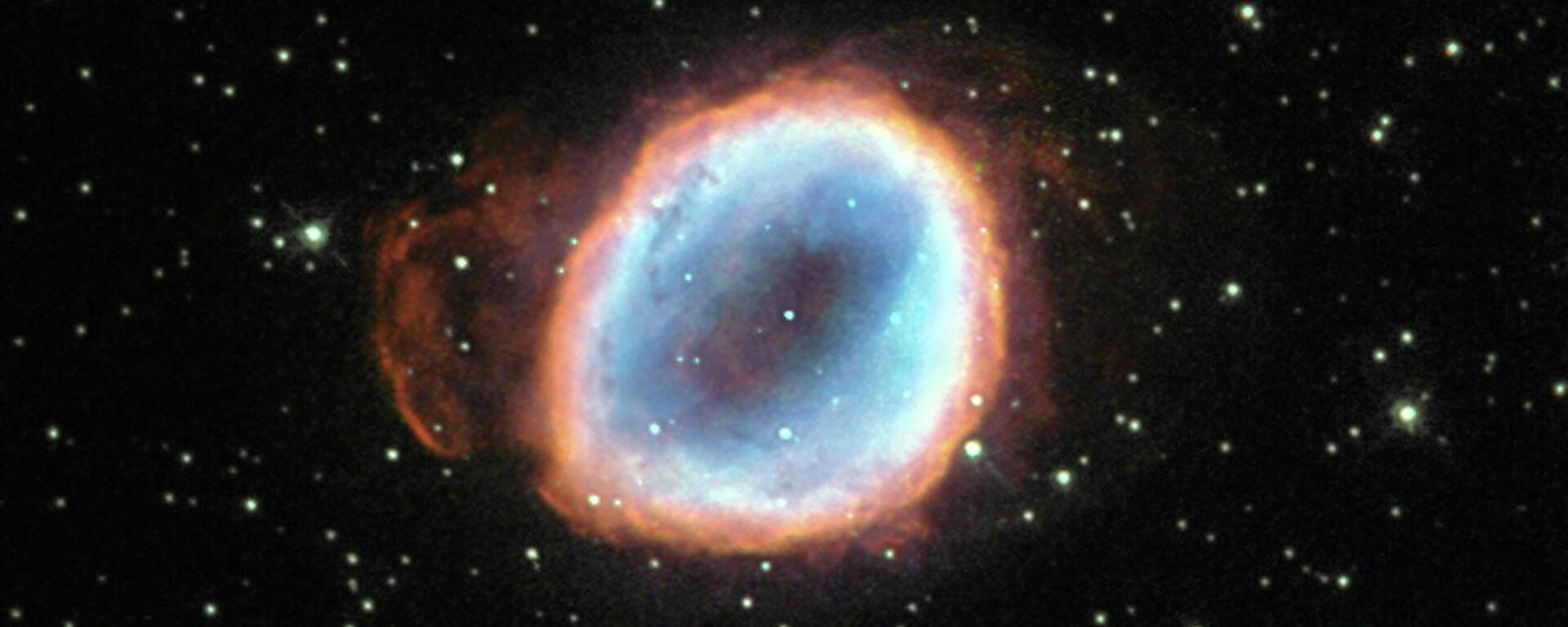https://sputnikglobe.com/20220914/from-techno--signatures-to-astro-archeological-artifacts-search-continues-for-alien-life-1100766853.html
From 'Techno-Signatures' to 'Astro-Archeological Artifacts,' Search Continues for 'Alien' Life
From 'Techno-Signatures' to 'Astro-Archeological Artifacts,' Search Continues for 'Alien' Life
Sputnik International
As far back as the late 1950s and early 1960s, scientists conceived the idea of searching for signs of “intelligent life” on faraway planets using unnatural... 14.09.2022, Sputnik International
2022-09-14T13:58+0000
2022-09-14T13:58+0000
2022-09-14T14:24+0000
aliens
universe
radio signals
aliens
ufos
science & tech
https://cdn1.img.sputnikglobe.com/img/105487/60/1054876024_0:4:1920:1084_1920x0_80_0_0_581c158e466cde4f0cab399770a676ac.jpg
As mankind continues its tireless search for “alien” life on faraway planets, scientists have been increasingly resorting to advanced methods of scouring the distant corners of the universe.From observations of so-called unidentified flying objects (UFOs), also called UAPs (unidentified aerial phenomena), the focus since the late 1950s and early 1960s has been on using "techno-signatures."It was assumed that if mankind uses radios to communicate, “aliens” might do the same thing for their communications. Accordingly, the search unfolded for unnatural-looking radio signals from fixed points far away in space. The SETI (Search for Extra-Terrestrial Intelligence) project has been active for years analyzing signals from possible life-bearing planets in outer space, a report in Universe Today underscored.Organizations like the SETI Institute and Breakthrough Listen lead the project’s efforts. Breakthrough Listen began in January 2016, with its science program based at the Berkeley SETI Research Center at the Astronomy Department of the University of California, Berkeley.The project uses radio wave observations from the Green Bank Observatory and the Parkes Observatory, as well as visible light observations from the Automated Planet Finder. Citizen scientists also play a key role in analyzing the data as it is gathered. While several candidate detections have been made, none have been confirmed.A plethora of innovative projects have been using new technologies in the search for extraterrestrial intelligence, such as scanning space with sensitive optical and acoustic technologies. For example, Gravitational Microlensing detects planets using techniques measuring the bending of light emitted by a star because of gravity from orbiting objects.Earlier, the new technological era brought with it advanced radio telescopes that, together with data from Kepler – a space observatory launched by NASA to discover Earth-size planets orbiting other stars) – revealed that potentially habitable exoplanets similar to Earth are much more common than originally thought.In August 2022, astronomers captured the first direct image of an exoplanet with the recently deployed James Webb Space Telescope. Webb boasts capabilities allowing for infrared exploration of exoplanets to detect water and carbon dioxide signatures in their atmosphere.‘Astro-Archeological Artifacts’The odds of detecting “Extraterrestrial Technological Civilizations (ETCs)” have been increasingly improving, claim scientists that are part of the Galileo Project, founded in July of 2021 by Avi Loeb and Frank Laukien of Harvard University.This is the first scientific research program looking for astro-archeological artifacts near Earth. The term ETC is applied instead of ETI, as the approach cautions against judging alien intelligence by human standards.The Galileo Project is focused on three main experimental tracks. The first is Imaging unidentified aerial phenomena in the infrared, radio, and optical bands, and recording audio data. For this purpose, the team has built their own observation equipment and AI to gather and interpret the findings. They are hoping to deploy the suite of instruments for full operation in the next few months.Other tasks include rendezvousing with future Interstellar objects (ISOs) passing through the Solar System, like Oumuamua, and recovering fragments from ISOs that collide with Earth.An example is the CNEOS 2014-01-08 interstellar object that impacted with Earth off the coast of Papua New Guinea. It was reported in June 2019 by astronomers Amir Siraj and Abraham Loeb, and later confirmed by the United States Space Command in April 2022.Furthermore, the team is focused on searching for small alien satellites orbiting the Earth using the Vera C. Rubin Observatory once it becomes operational in 2023.Regarding the focus on "physical artifacts" as a novel strategy in SETI, Loeb and Laukien have both voiced optimism, underscoring that detection is rendered less time-critical for a physical object.
https://sputnikglobe.com/20220901/nasa-webb-telescope-takes-first-ever-direct-image-of-exoplanet-outside-solar-system-1100280345.html
Sputnik International
feedback@sputniknews.com
+74956456601
MIA „Rosiya Segodnya“
2022
News
en_EN
Sputnik International
feedback@sputniknews.com
+74956456601
MIA „Rosiya Segodnya“
Sputnik International
feedback@sputniknews.com
+74956456601
MIA „Rosiya Segodnya“
aliens, universe, radio signals, aliens, ufos, science & tech
aliens, universe, radio signals, aliens, ufos, science & tech
From 'Techno-Signatures' to 'Astro-Archeological Artifacts,' Search Continues for 'Alien' Life
13:58 GMT 14.09.2022 (Updated: 14:24 GMT 14.09.2022) As far back as the late 1950s and early 1960s, scientists conceived the idea of searching for signs of “intelligent life” on faraway planets using unnatural radio signals, biosignature gases, and optical anomalies across the night sky.
As mankind continues its tireless search for
“alien” life on faraway planets, scientists have been increasingly resorting to advanced methods of scouring the distant corners of the universe.
From observations of so-called unidentified flying objects (UFOs), also called UAPs (unidentified aerial phenomena), the focus since the late 1950s and early 1960s has been on using "techno-signatures."
It was assumed that if mankind uses radios to communicate, “aliens” might do the same thing for their communications. Accordingly, the search unfolded for unnatural-looking radio signals from fixed points far away in space. The SETI (Search for Extra-Terrestrial Intelligence) project has been active for years analyzing signals from possible life-bearing planets in outer space, a report in Universe Today underscored.
Organizations like the SETI Institute and Breakthrough Listen lead the project’s efforts.
Breakthrough Listen began in January 2016, with its science program based at the Berkeley SETI Research Center at the Astronomy Department of the University of California, Berkeley.
The project uses radio wave observations from the Green Bank Observatory and the Parkes Observatory, as well as visible light observations from the Automated Planet Finder. Citizen scientists also play a key role in analyzing the data as it is gathered. While several candidate detections have been made, none have been confirmed.
A plethora of innovative projects have been using new technologies in the search for extraterrestrial intelligence, such as scanning space with sensitive optical and acoustic technologies. For example, Gravitational Microlensing detects planets using techniques measuring the bending of light emitted by a star because of gravity from orbiting objects.
Earlier, the new technological era brought with it advanced radio telescopes that, together with data from Kepler – a space observatory launched by NASA to discover Earth-size planets orbiting other stars) – revealed that potentially habitable exoplanets similar to Earth are much more common than originally thought.

1 September 2022, 16:14 GMT
In August 2022, astronomers captured the first direct image of an exoplanet with the
recently deployed James Webb Space Telescope. Webb boasts capabilities allowing for infrared exploration of exoplanets to detect water and carbon dioxide signatures in their atmosphere.
‘Astro-Archeological Artifacts’
The odds of detecting “Extraterrestrial Technological Civilizations (ETCs)” have been increasingly improving, claim scientists that are part of the Galileo Project, founded in July of 2021 by Avi Loeb and Frank Laukien of Harvard University.
This is the first scientific research program looking for astro-archeological artifacts near Earth. The term ETC is applied instead of ETI, as the approach cautions against judging alien intelligence by human standards.
The Galileo Project is focused on three main experimental tracks. The first is Imaging unidentified aerial phenomena in the infrared, radio, and optical bands, and recording audio data. For this purpose, the team has built their own observation equipment and AI to gather and interpret the findings. They are hoping to deploy the suite of instruments for full operation in the next few months.
Other tasks include rendezvousing with future Interstellar objects (ISOs) passing through the Solar System, like Oumuamua, and recovering fragments from ISOs that collide with Earth.
An example is the CNEOS 2014-01-08 interstellar object that impacted with Earth off the coast of Papua New Guinea. It was reported in June 2019 by astronomers Amir Siraj and Abraham Loeb, and later confirmed by the United States Space Command in April 2022.
Furthermore, the team is focused on searching for small alien satellites orbiting the Earth using the Vera C. Rubin
Observatory once it becomes operational in 2023.
Regarding the focus on "physical artifacts" as a novel strategy in SETI, Loeb and Laukien have both voiced optimism, underscoring that detection is rendered less time-critical for a physical object.




